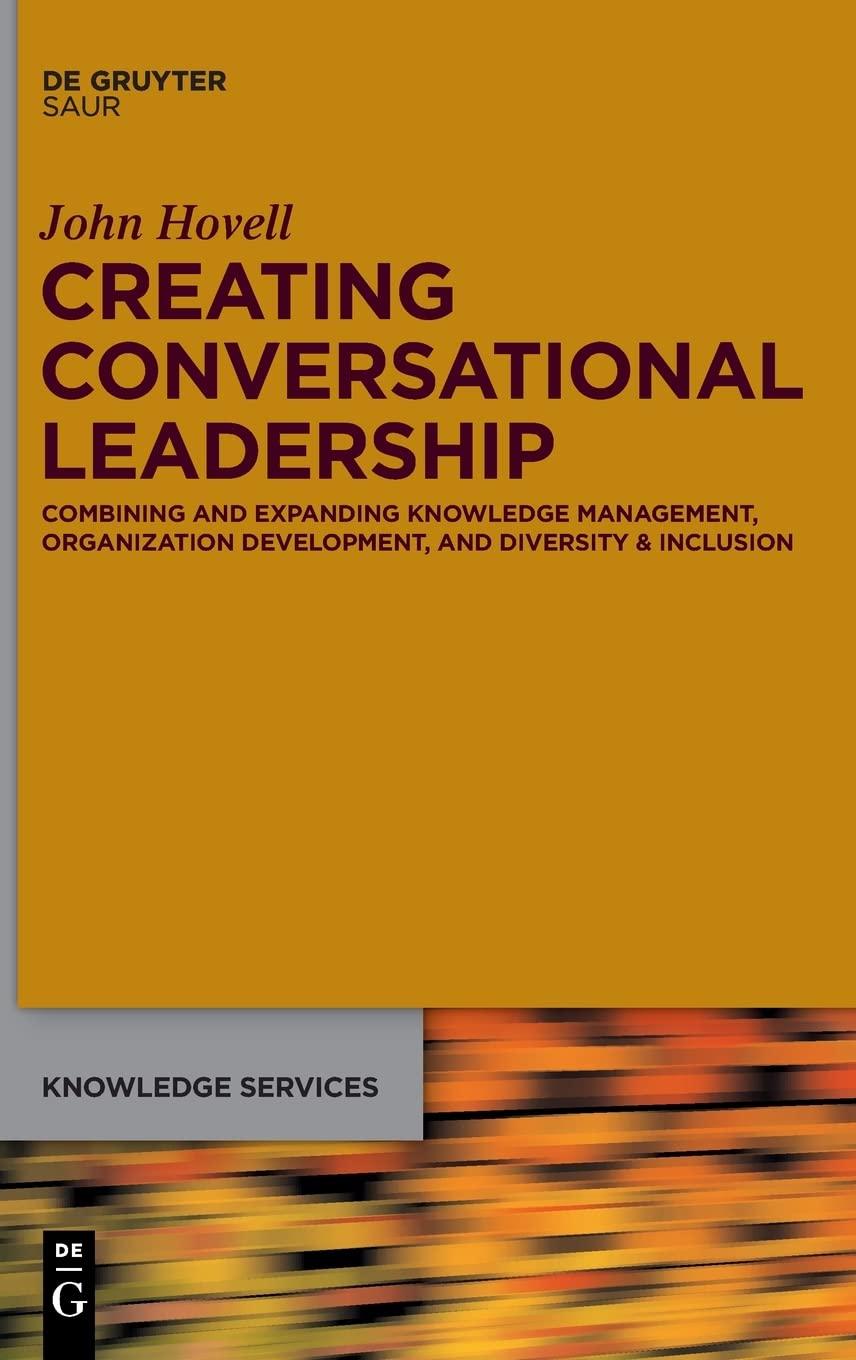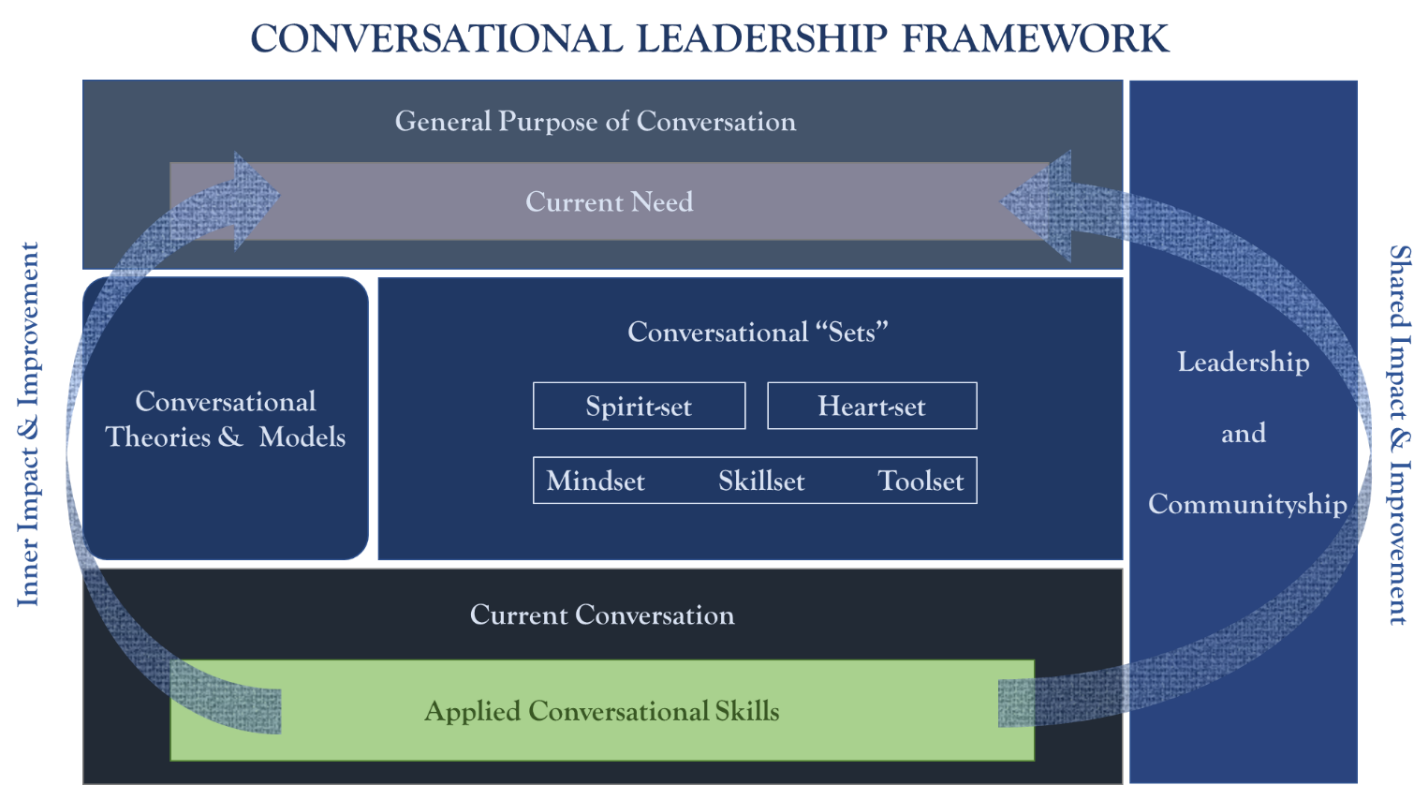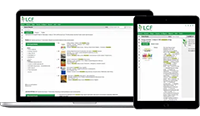Lucidea’s Lens: Knowledge Management Thought Leaders Part 83 – John Hovell

Stan Garfield

John Hovell is the Managing Director and co-founder of STRATactical, a consulting and training provider.
A leader in the convergence of Knowledge Management (KM) and Organization Development (OD), he is a practitioner, speaker, and author in OD/KM strategies and their application to current challenges.
John has expertise in knowledge management, knowledge transfer, knowledge retention, talent markets, communities of practice, project management, change management, organization development, diversity and inclusion, collaboration, social media, social business, agility, Conversational Leadership, and Working Out Loud. He is active in multiple KM and OD communities in the Washington, DC area. John is a frequent promoter of job openings in the KM field.

3 Steps to Improve Conversations
- Pure listening: Truly listen to other people’s spoken words (and non-verbals) while simultaneously and separately holding your perception of those words. Be aware of the time and space for your interpretations of other people’s words and phrases.
- Continuous awareness: As you’re speaking, raise your own awareness for multiple interpretations of the words you speak (as well as your non-verbals). Be prepared for a range of responses so that you can maintain the optimal flow of the conversation.
- Maintain curiosity: Skillfully “check-in” to see and hear how your words (and non-verbals) were perceived by other people.
Can Agile Get Along with Knowledge Management?
How could the partnership between agile and KM work?
Agile is looking to shift cultures from linear, hierarchical monoliths to iterative, self-organizing, need-responsive ecosystems. KM is looking to shift cultures from information/knowledge hoarding, knowledge is power, expertise/decision bottlenecks to unique and critical knowledge created/available in the moment/context it is needed.
Agile is looking to increase process efficacy by implementing well-known, well-tested processes. KM is looking to increase process efficacy by implementing KM processes such as communities of practice, talent markets, knowledge markets, even random coffee trials.
Agile uses software tools to document, communicate, and share progress. KM uses SharePoint, and every technology listed at superpowers and conversation prism to create new knowledge, share retain, and transfer knowledge, store, organize, apply, and evaluate knowledge. Both disciplines are looking to stimulate innovation, reduce feedback loops, and include people along the way.
Liberating Structures has emerged as a field related to both Agile and Knowledge Management. There are 35 well-defined and practiced processes within liberating structures. In addition to liberating structures (such as knowledge café, TRIZ, 1–2–4-all, etc.), I hear Communities of Practice and other KM practices being considered in agile discussions.
Key Points
- Agile is much more than a series of ceremonies; KM is much more than sharing documents.
- KM is often confused with IM (Information Management), where KM leverages explicit and tacit knowledge.
- The Agile principles have beautiful overlap with KM principles.
- The Agile Manifesto might have been written using a KM mindset.
- Imagine if Agile and KM quite purposefully partnered together.
Could “Conversational Leadership” Avert Deeply Troubling Times Ahead?

General Purpose of Conversation
In the top bar we see “General Purpose of Conversation” and “Current Need”. The general purpose of conversation can be highly debated, but in the case of Conversational Leadership, we’re referring to making sense of a highly complex and connected world. The general purpose of conversation from this perspective would be to partner and understand ourselves, each other, and our situation(s) through conversation. It is about enabling our best ability to act and improve.
The “Current Need” refers to your current needs in any active conversation that you’re having. It also refers to the needs of the other people in the conversation. Even more complex, it also refers to the needs of the entire group. Group needs are often different from individuals’ needs. As simple as it sounds, it can be quite difficult to be aware of your deepest needs in any given conversation. It can also be difficult to express your deepest needs in any conversation. For example, imagine you’re standing at a train station and the person next to you starts a conversation with you about the weather. Do you need to discuss the weather because that topic might begin to build trust and lead to the next topic. Or, do you need to have a personal conversation about a recent death in the family because that topic completely occupies your mind. As I learned in acting school, maybe it’s not only “needs” that are relevant, maybe it is “needs, wants and desires”. Then, it’s not only about the topic that’s being discussed, then it also becomes about “how” and “when” and “where” and many other facets of the conversation.
Imagine if we were all skilled at knowing the general purpose of conversation, and our current needs/wants/desires in this conversation, and how to express those needs/wants/desires. The two key questions in this area could be:
- Are you having the conversation you need to be having right now?
- Are we having it in the way we need to be having it?
Leadership and Communityship
Notice that there are 2 columns in this model. The left column is much wider than the right column. The left column focuses on “conversation”, while the right column focuses on “leadership”. The “Leadership and Communityship” is less fleshed out than the conversational column because many decades of work have been done in leadership. Henry Mintzberg coined the term “Communityship”, which if I understand it correctly, is attempting to say that maybe we need to augment individual leadership with group-level leadership which could be called “Communityship.”
Conversational Theories & Models
Underneath “General Purpose of Conversation” we see “Conversational Theories & Models.” There are dozens of well-received books/models that offer how to have certain kinds of conversations. For example, but not limited to, there are books on crucial conversations, healing conversations, deep conversations, non-violent communications, influencing, negotiating, etc. There are also quite helpful models such as polarity thinking/mapping that can serve to enable highly aware conversations. Conversational Leadership, at this point, simply aims to be a pointer to the many existing models that support improved conversational skills. Stay tuned to this area though, there is hope that the field itself could result in new conversational theories and models.
Conversational “Sets”
Next to theories & models, we see “Conversational Sets”. At first, we listed mindset, skillset and toolset, we later added John Hagel’s spirit-set and heart-set. Each one of these boxes again offers a list of pointers.
Conversational Mindset could include conversational beliefs and principles such as “everyone has an equal voice” and “time for feedback and collective sense-making”, etc. The idea is to be aware of the mindset you’re bringing into each conversation, and the patterns you have across all of your conversations.
Conversational Skillset includes your conversational behaviors and habits. For example, within your conversational skillset, what is your behavior for making time to reflect? What are your listening habits? The list of conversational behaviors and habits is quite extensive, so in Conversational Leadership we are working to raise awareness of your conversational behaviors/habits and their impact on yourself, others and the situation.
Conversational Toolset includes a long list of “tools” for designing conversations. For example, we could use a knowledge café design or an after-action review design for conversation. Liberating Structures is a related field that offers at least 30 different conversational designs. Conversational Leadership could have a Conversational Toolkit to include conversational processes and software that support conversation.
Above mindset, skillset, toolset, you’ll notice spirit-set and heart-set. Credit (and further detail) goes to John Hagel for these concepts. If I understand them correctly, these concepts are to remind us that mindset, skillset and toolset tend to come from the brain, whereas heart-set and spirit probably come from somewhere else. Maybe it is the difference between mind and brain, maybe it’s the difference between thinking and feeling, maybe it is something else. From a Conversational Leadership perspective, spirit-set and heart-set are intended to be reminders that our conversational spirit and our conversational heart/emotions are well worth being aware of, and potentially even bringing into the conversation.
Current Conversation
At the bottom of the conversational left column, we see “Current Conversation” and “Applied Conversational Skills”. This area is intended to remind us that Conversational Leadership can be applied in every conversation by every person at any given time. It is meant to be the real-time application of all the other areas of the Conversational Leadership framework. In other words, during a conversation, am I able to “see” the conversational design, the conversational process, my own needs, the general purpose of the conversation? Can I embed light structure or facilitation if and when necessary? Am I aware, and listening for, individual and group needs? What is being said in the conversation, what might be covertly being said or not said in the conversation that is impactful?This area of the framework is simply intended to be a reminder that Conversational Leadership is an applied discipline, it can be considered within every conversation.
Impact & Improvement Loops
You might notice the arrows on the far left and far right of the framework. These arrows are designed to remind us that every conversation has an impact on ourselves, on others and on our situation. If we approach conversations in a meaningful way, ready to learn and improve (not only the task and topic, but our conversational skills as well), then we can likely begin to live life in a conversational way. The hope and drive of Conversational Leadership is to connect with each other, make sense of our situations, and carry forward as best we can.

Stan Garfield
**Disclaimer: Any in-line promotional text does not imply Lucidea product endorsement by the author of this post.
Never miss another post. Subscribe today!
Similar Posts
Lucidea’s Lens: Knowledge Management Thought Leaders Part 106 – Hubert Saint-Onge
As the creator of the Knowledge Assets Framework Hubert has shaped how businesses integrate strategy leadership and knowledge sharing to drive performance.
Lucidea’s Lens: Knowledge Management Thought Leaders
Part 105 – James Robertson
James Robertson is a pioneer in intranet strategy and digital workplace design helping organizations create seamless employee experiences. As the Founder of Step Two and a respected industry voice he has shaped best practices in content management portals and digital experience design.
Lucidea’s Lens: Knowledge Management Thought Leaders
Part 104 – Vincent Ribière
Vincent Ribière advances knowledge and innovation management through AI creativity and KM. Explore his work in academia research and industry leadership.
Lucidea’s Lens: Knowledge Management Thought Leaders Part 103 – Tony Rhem
In this edition of Lucidea’s Lens: Knowledge Management Thought Leaders we highlight Dr. Tony Rhem a leading expert in AI big data information architecture and innovation. As CEO of AJ Rhem & Associates Tony has shaped the fields of knowledge management governance and emerging technologies.






Leave a Comment
Comments are reviewed and must adhere to our comments policy.
0 Comments